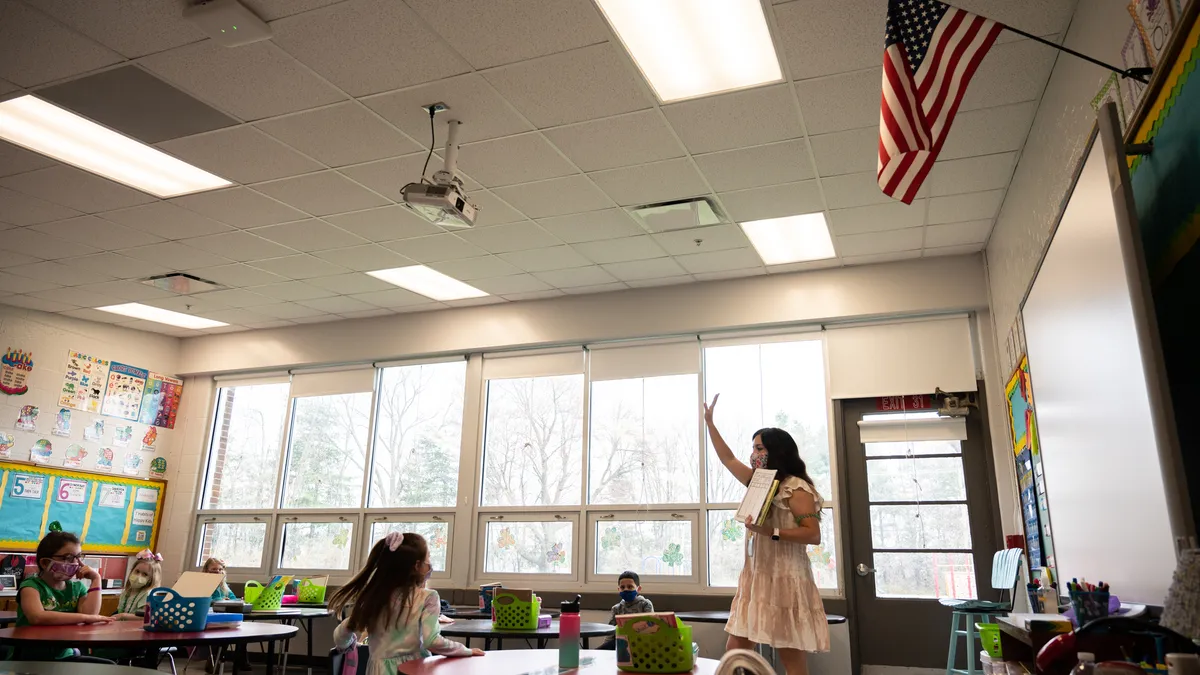Dive Brief:
-
Additional federal stimulus funding and pandemic instructional experiences are leading school administrators to revamp teacher professional development opportunities for this summer and early next school year so efforts lead to high-impact student outcomes.
-
Some of the ambitious plans for teacher PD will center on instructional strategies, multi-tiered systems of support, ed tech, social-emotional learning, and equity and inclusion, according to administrators K-12 Dive spoke to. Specific populations of teachers and students will also receive attention through PD, such as new educators and students experiencing homelessness.
-
After being in a mostly reactive mode during the disruption from last year, K-12 administrators are seeking strategic approaches that balance a variety of instructional needs, funding and scheduling limitations, and educators’ desires for personal and flexible PD.
Dive Insight:
Michael Lubelfeld, superintendent of the North Shore School District 112 in Highland Park, Illinois, said his school district has reenergized its focus on what works best in education and has taken guidance from John Hattie’s research on influences for student achievement. Some of the district’s PD will include explicit teaching strategies, phonics instruction and teacher efficacy.
The Premont Independent School District in Texas will concentrate on teacher training for new curricula for various subjects with resources provided through Texas Home Learning, an optional, free menu of instructional resources, said Superintendent Steve VanMatre.
The new suite of curricula is a major change from what the district has had in place for the past 10 years, as it will add a consistent instructional framework across subject areas and grade levels, VanMatre said. For example, teacher training will include best practices for explicit instruction, content delivery, lesson planning and more. The district is spending about $75,000 in Elementary and Secondary School Emergency Relief Funds for this teacher training and has additional initiatives in place or planned.
“I do think COVID has given us a golden opportunity to change… and we’re going to take advantage of that,” VanMatre said.
The emphasis on thoughtful and effective professional development after a year of turmoil in education is also coming from state education agencies and the U.S. Department of Education. Specifically, the Department of Education’s COVID-19 Handbook. Vol. 2 recommends school district staff training on identifying students experiencing homelessness or students with disabilities and educator training on improving instructional design and effective use of technology to support student learning.
“Research shows technology is most effective when it is integrated into instruction, and activities are designed by teachers for students to explore, learn, and create,” the handbook states.
The handbook also urges districts to put more attention and resources toward support for new teachers whose clinical experiences through teacher preparation programs were disrupted over the past year. It highlighted the example of the Illinois State Board of Education, in collaboration with the Illinois Education Association and the Illinois Federation of Teachers, to create a virtual instructional coaching and mentoring program with the use of Coronavirus Aid, Relief, and Economic Security Act funds.
The Council of the Great City Schools also stressed the importance of high-quality PD and provided case study examples from 10 school districts in a recent report. Features of high-quality educator PD, according to the report, are a focus on content, support for collaboration, the provision of feedback and reflection, and personalized coaching and support.














